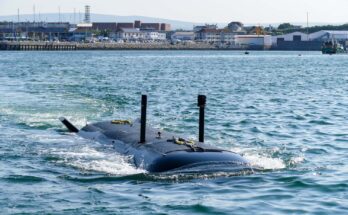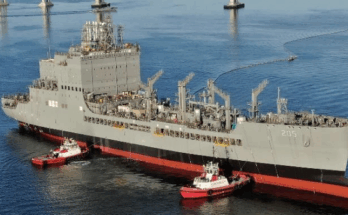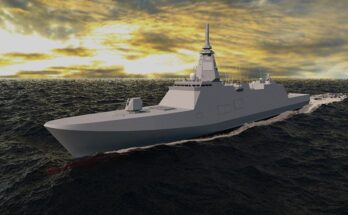by Stuart Slade, Senior Naval Systems Analyst, Forecast International.

Sea-Air-Space Symposium, Washington – One of the topics that invariably comes up at a meeting of naval-oriented people concerns the iniquities of the past wherein ships that were supposedly the perfect solutions to the requirements of the time were scrapped, allegedly to “save money.” Those of the aviation persuasion add in their pleas on behalf of aircraft that were once in service but are now relegated to museums. So, why were these alleged paragons of virtue removed from service and scrapped?
Determining the service life of a given piece of equipment is a complex calculation that has to weigh the added costs of building equipment for an extended life together with the projected rate of technological change over the service life. Any calculation also must consider the likely financial burdens represented by the need to make major modifications to the equipment to address changing operational requirements and threat environments. A ship with an extended hull life will cost more to build and keep in service. More significantly, if the design life of the ships is exceeded, those additional costs increase exponentially. Cost studies have shown that running a ship for 10 years beyond her design life incurs additional costs equivalent to the purchase of a new unit. This means that keeping old ships in service quickly becomes cost-prohibitive and actually harms naval capability by absorbing the funds that would otherwise have been invested in new construction.
Beyond that consideration is another, more absolute factor. There comes a point where a ship simply cannot be kept in service any longer. Spare parts are no longer available because the company that made them is no longer in business. Materials may no longer be available or may have been found too hazardous to continue using. Asbestos insulation comes to mind here. Many ships in the late 1940s were given sprayed asbestos insulation but then had to be scrapped a few years later when the hazardous nature of that material became known. Typically, as ships age, they have to receive major remedial maintenance more frequently, the costs of that maintenance rises, and the possibility of the work being successful decreases. Eventually, the point is reached where, no matter how much is spent on the ship or how often that expenditure is made, the repairs will never be successful.
So, when the statement “we should never have scrapped the XYZ, she’s just what we need today” gets made, the response is very simple. If we hadn’t, we wouldn’t have the new modern ship ABC in her place.
Please feel free to use this content with Forecast International and analyst attributions, along with a link to the article. Contact Ray Peterson at +1 (203) 426-0800 or via email at ray.peterson@forecast1.com for additional analysis.
FI’s Naval Systems Market Intelligence Services cover two distinct markets: anti-submarine warfare and warships. The Anti-Submarine Warfare Forecast provides market analysis of the sensors and weaponry used in the detection and prosecution of submarines, while the Warships product covers the full range of worldwide warship programs, including reports on key naval weapons and unmanned surface and subsurface vehicles.
For 50 years, Forecast International intelligence reports have been the aerospace and defense industry standard for accurate research, analysis, and projections. Our experienced analysts compile, evaluate, and present accurate data for decision makers. FI's market research reports offer concise analysis of individual programs and identify market opportunities. Each report includes a program overview, detailed statistics, recent developments and a competitive analysis, culminating in production forecasts spanning 10 or 15 years. Let our market intelligence reports be a key part of reducing uncertainties and mastering your specific market and its growth potential. Find out more at www.forecastinternational.com




